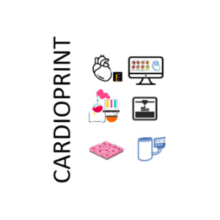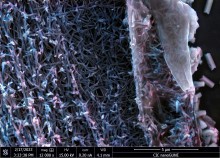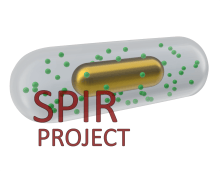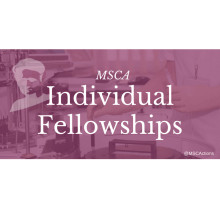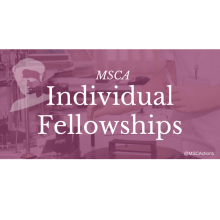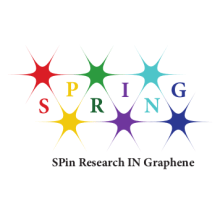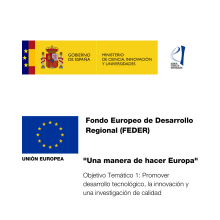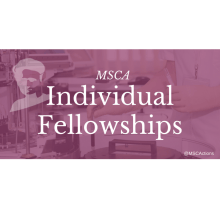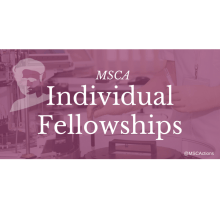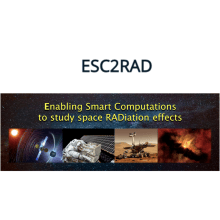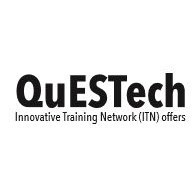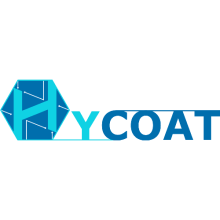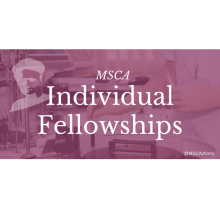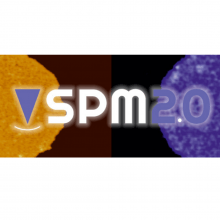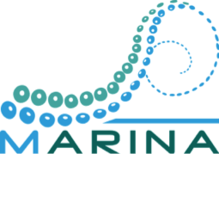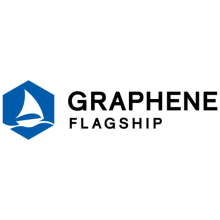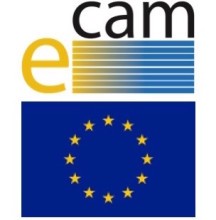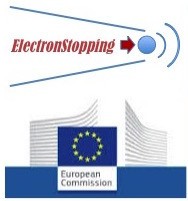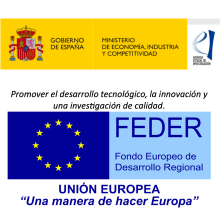Projects at a glance
Functional Nano-Scaffolds for Regenerative Medicine PhD programme
The mission of NanoReMedi is to define a joint doctorate educational training model in Functional Nano-Scaffolds for Regenerative Medicine where Academia and Industry join their forces to create a highly innovative research network for training a new generation of researchers who will enter the area of nanoscience from adjacent disciplines (such as chemistry, material sciences and bioinformatics) establish a solid framework for long-term research cooperation between a pool of leading Universities and Enterprises build a solid foundation for long-term European excellence in medical nanotechnology.
QMOLESR - Addressing molecular spin qubits by ESR-STM
The emergence of ESR-STM has recently opened new perspectives on the coherent manipulation of individual spin qubits. However, to date ESR-STM experiments are essentially focused on individual magnetic atoms deposited on MgO/Ag(100). The insulating layer of MgO seems to be an essential ingredient to obtain addressable and functional single atom qubits, e.g. to fix the spin along certain directions and enable ways for its manipulation. The aim of this project is to go beyond the current restriction of ESR-STM on individual atomic qubits on MgO layers and expand its usage towards robust qubits in other environments. This will be done by using metallo-organic complexes whose organic structure is designed in such a way to play the role of the MgO layer. ESR will be performed on individual magnetic molecules and their potential as molecular spin qubits in contact with metals will be probed. The overall methodology of the project is divided into three main objectives: (1) demonstrate ESR-STM on magnetic molecules; (2) demonstrate ESR-STM on magnetic molecules in direct contact with a metallic substrate and use molecules as magnetic sensors; (3) protection of spin coherence by superconductivity. The impact of the project goes beyond the purely scientific interest and it extends to the industrial sectors of technology and telecommunications. This is because it actually opens the possibility of implementing spintronic devices aimed at storage and manipulation of quantum information in which the individual qubits can be concretely addressed thanks to some type of electrode. Moreover, the coherent control of quantum states is currently under large demand in Europe. In this regard, the highly specialized expertise acquired by the researcher thanks to this project will clearly be an added value in the preparation of his future career. In conjunction with its scientific aim, QMOLESR is designed to train an excellent, independent researcher who will develop his research career.
HiMat - Hybrid layered materials for next generation electronics
HiMat focuses on the development of hybrid layered materials (HLMs) with tailored physical properties and their integration in lab-scale devices for opto- and spin- electronics or quantum computing. By taking advantage from the chemical flexibility of organic molecules, HiMat explores tailored HLMs obtained through a top-down approach as intercalated compounds and through a bottom-up approach as organic-inorganic metal-halide perovskites.
LSD - Low-dimensional Spin Devices
This project explored materials and architectures with low dimensionality and symmetry to develop spintronic devices. We created structures based on van der Waals materials or quiral materias in order to study the effect of symmetry breaking on the materials’ spin properties.
OPTOMETAMAG - Optical-control of thermally driven magnetic phase transitions in metamaterials
The project aims at developing hybrid systems combining the ultralow energy, speed, and control of plasmonic opto-heating with the unique property of nanoscale graded magnetic metamaterials to display magnetic phase transitions across precisely engineered critical temperatures.
NANOSPEC - Advanced near-field optical nanospectroscopy and novel applications in material sciences and nanophotonics
The objectives of the project include establishing correlative nano-FTIR, TERS, and TEPL spectroscopy, studying industrially relevant polymers, exploring organic conductors' conductivity, and investigating phonon polaritons in 2D materials. The project targets developing advanced near-field spectroscopy instrumentation and achieving vibrational strong coupling in nanoresonators and molecular vibrations.
CARDIOPRINT - Advanced multifunction 3D biofabrication for the generation of computationally modelled human-scale therapeutic cardiac tissues
CARDIOPRINT is born with the ambition of shaping a quantum leap in the fields of Additive Manufacturing and Biofabrication of therapeutic human cardiac tissues, at both the technological and applicative levels. The overall concept of this enterprising project is to develop a new multifunctional additive manufacturing technology able to provide the sufficient accuracy for the manufacturing of human tissues at an organ scale for the first time.
HYTEM - Organic-inorganic hybrid thermoelectric materials through a new concept of simultaneous vapor phase coating and infiltration (VPI/SCIP)
Polymers and inorganics come together to support novel waste heat harvesting.
Organic-inorganic hybrid materials can significantly enhance the design space for novel functionalities, integrating the best properties of the individual components and even resulting in new ones. Polymers and functional inorganic compounds are the top players in the world of materials science. With the support of the Marie Skłodowska-Curie Actions programme, the HYTEM project will bring them together literally, generating inorganic structures simultaneously in the subsurface of a bulk polymer and on its top surface. The expected result: novel hybrid thermoelectric materials able to scavenge waste heat and turn it into electricity with unparalleled efficiency.
SNOMCELL - Near-field microscopy for label-free ultrastructural pathology
This project aims at establishing s-SNOM as a platform technology for label-free ultrastructural pathology. s-SNOM is an emerging technique -- co-developed at nanoGUNE -- that beats the diffraction limit and allows for obtaining infrared images with nanoscale spatial resolution. Applied to ultrathin cell sections, s-SNOM will allow for an unprecedented view on the chemical composition of the interior of a cell that cannot be easily calculated nor measured. Thus, s-SNOM will provide a reference data set that will help to validate already existing medical application of infrared microscopy and may even lead to the discovery of new nano-IR biomarkers.
SPIR - Spasers in the infrared range
One of the important directions of modern medicine is noninvasive diagnostics. The urgency of the problem is determined by the search of safe methods of examination and sparing techniques of collection of material for medical analysis when the patient does not feel pain, physical and emotional discomfort.
FunMolSys - On-surface Synthesis of Functional Molecular Systems
This is a collaborative research project funded by the Spanish Research Agency (AEI) for synthetizing functional complex carbon-based molecular nanostructures with atomic precision and testing their potential operability as functional units in various technological applications, such as spintronics, topological engineering, (opto)electronics, thermoelectricity, and chemical and molecular sensing and filtering. FunMolSys combines the work of six Spanish research groups in Galicia (CiQUS at the University of Santiago de Compostela), Euskadi (the CFM, Centro de Física de Materiales - CSIC-UPV, and CIC nanoGUNE), Aragón (the ICMA, Instituto de Ciencia de Materiales de Aragón – CSIC-UZ), and Catalunya (the ICN2, Instituto Catalán de Nanociencia y Nanotecnología). In the last years, FunMolSys has produced novel strategies for synthesis of customized graphene platforms over metallic surfaces and identification of their new electronic and magnetic properties with a combination of multiple experimental methods, theoretical tools, and multidisciplinary expertise. Within FulMolSys, the research groups of Theory and nanoimaging, led by Profs. Artacho and Pascual, respectively, contributed with a sub-project entitled “Magnetism and topological states of on-surface engineered molecular nanosystems”
SYNERFUN - Synergistic Surface Functionalization for Advanced Diagnistic, Catalytic and Packaging Materials
This project aims to leverage our expertise in surface functionalization and hybrid material fabrication to develop new systems for diagnostics, energy conversion, and food packaging. Our capabilities include synthesizing 0D materials (nanoparticles) and 2D materials (atomic scale thin films) and modifying surfaces with hybrid materials to introduce or enhance chemical and physical properties. Our focus will be on developing innovative materials with exciting applications in biomedical diagnostics and therapies, and concepts for enhancing common polymers used for intelligent food packaging in the future.
BRIDGE - Bridging the gap between synthetic polymers and biopolymers physical and chemical properties
The project BRIDGE is aimed at closing the gap between studying polymers and biopolymers. Traditionally, these materials are "at home" in the disciplins of soft matter physics and of biophysics, respectively. Our interdisciplinary approach opens new avenues, of which we explored morphology and dynamics. A special focus was on the role of water, as solvent, and as adsorbed layer.
ENSEMBLES3 Phase II - Centre of ExcelleNce for nanophotonicS, advancEd Materials and novel crystal growth-Based technoLogiEs
The grand objective of the project is to create the Centre of Excellence ENSEMBLE3, which will focus on research excellence and innovation performance in the area of crystal growth-based technologies, novel functional materials with innovative electromagnetic properties, and applications in nanophotonics, optoelectronics and medicine.SPRING - SPin Research IN Graphene
The EU-funded H2020 project SPRING (project ID 863098) is focused on the development of new graphene-based magnetic components that contribute to the creation of faster and environmentally friendly electronic devices. This international research project is coordinated by CIC nanoGUNE (ES) in partnership with IBM (CH), University of Santiago de Compostela (ES), Technical University of Delft (NL) and University of Oxford (UK), and Donostia International Physics Center (ES).
Evaporador - Evaporador para el crecimiento de películas delgadas en alto vacío
El proyecto tiene como finalidad la compra de un evaporador de alto vacío provisto de dos tipos diversos de evaporación de materiales y un equipo de ataque físico por iones. Las características de este equipo nos permitirán ampliar los materiales disponibles en nuestra sala blanca, así como acometer procesos de fabricación con condiciones ideales en cuanto a limpieza de intercapas y con un nivel ideal de rotación de usuarios.
R-I PEERS- Pilot experiences for improving gender equality in research organisations
The R&I PEERS project will be based on the concept of gender equality, that can be expressed as “women and men enjoy the same status and have equal opportunity to realize their full human rights and potential to contribute to national, political, economic, social and cultural development, and to benefit from the results”.PETER-Plasmon Enhanced Terahertz Electron Paramagnetic Resonance
We propose to establish Plasmon -enhanced Terahertz Electron Paramagnetic Resonance spectroscopy and scanning microscopy as a unique Electron Paramagnetic Resonance (EPR) platform for high-sensitivity local analysis of paramagnetic organic and inorganic species and materials. Here, we will deliver novel hardware and infrastructure providing ground-breaking innovation in the magnetic sensing and imaging.QuESTech - QUantum Electronics Science and TECHnology training
QuESTech (Project ID: 766025) is a consortium of 7 leading European research laboratories and 2 high-tech companies. Supported by the European Community, QuESTech will provide a challenging, state-of-the-art training for young researchers in the general field of experimental, applied, and theoretical quantum electronics. The main scientific topics include spintronics, molecular electronics, single electronics, transport in low-dimensional structures, and quantum thermodynamics.HYCOAT - A European Training Network for Functional Hybrid Coatings by Molecular Layer Deposition
Thin films of hybrid materials engineered at the molecular scale can enable breakthroughs in several economically and socially relevant technological application areas including packaging & encapsulation, electronics, batteries and biomedical applications. With self-limiting binary reactions, Molecular Layer Deposition (MLD) is the ideal deposition technique for growing ultra-thin, uniform, conformal hybrid films with precise and flexible control over the film thickness and molecular-scale chemical composition. The key objective of HYCOAT is to create a group of exceptionally well-trained young researchers who have a deep understanding of all aspects of MLD technology, as well as broad vision on the application potential of hybrid coatings.ENSEMBLES3 - Centre of ExcelleNce for nanophotonicS, advancEd Materials and novel crystal growth-Based technoLogiEs
Within the project an extensive, detailed and robust Business Plan will be developed for setting-up of the Centre of Excellence ENSEMBLE3, with focus on the research excellence and innovation performance in the area of crystal growth-based technologies, novel functional materials with innovative electromagnetic properties, and applications in nanophotonics, optoelectronics, telecommunication, medicine, and photovoltaics.
DELICE- Device oriented molecular spin filter based interfaces
We live in a constantly changing society in which information and communication are at the basis of our economy. To keep progressing is essential to investigate new feasible ways to control and manipulate information in order to develop faster, smaller and less consuming devices. Organic Spintronics has emerged as a promising field to develop low-cost, mechanically-flexible and multi-functional devices in which information is carried not only by the charge but also by the spin of electrons.ALD4MAX- Atomic Layer deposition For tailored bottom-top growth of MAX and MXene films
Atomic Layer Deposition For tailored bottom-top growth of MAX and MXene films.SPM2.0- Scanning probe microscopies for nanoscale fast, tomographic and composition imaging
Advanced Microscopy are widely recognized as one of the pillars onto which the research and manufacture of Nanotechnology based products is sustained. At present, the greatest challenge faced by these techniques is the realization of fast and non-destructive tomographic images with chemical composition sensitivity and with sub-10 nm spatial resolution, in both organic and inorganic materials, and in all environmental conditions.SGPCM- Switching grapheme-plasmon with phase-change materials
Graphene plasmons (GPs), is enable the transport and control of light on an extreme subwavelength scale as well as the dynamic tunability via electric-gate voltage, which can be exploited for numerous applications such as for strong light-matter interactions, tunable infrared biosensing and absorption spectroscopy, subwavelength optical imaging, as well as for the development of tunable transformation optics devices, metamaterials and metasurfaces.
MARINA - Marine Knowledge Sharing Platform for Federating Responsible Research and Innovation Communities
The objective of the MARINA project is to accomplish the resolution of marine related issues and problems following the responsible research and innovation principle, creating an all-inclusive Knowledge Sharing Platform, together with federating activities such as Mobilisation and Mutual Lerning workshops and exhibitions. The expected outcome of the Work Programme is a clear improvement of the integration of society in science and innovation.InfeMec- Nanomechanics of proteins involved in viral and bacterial infections
We will use bioinformatics and high-throughout screening techniques to identify molecules that alter the nanomecanichs of anchoring proteins and that can potentially be used to prevent infections.E-CAM - An e-infrastructure for software, training and consultancy in simulation and modelling
E-CAM will create, develop and sustain a European infrastructure for computational science applied to simulation and modelling of materials and of biological processes of industrial and societal importance. Building on the already significant network of 15 CECAM centres across Europe and the PRACE initiative, it will create a distributed, sustainable centre for simulation and modelling at and across the atomic, molecular and continuum scales.
ANTOMIC - Quantum nanoantennas for atomic-scale optical spectroscopy
The ANTOMIC project (Quantum nanoantennas for atomic-scale optical spectroscopy) studies the quantum limits of light emission and scattering by metallic and molecular nanowires of nanometer sizes. We will identify their plasmon resonances and correlate them with their quantized electronic structure.
SIESTA-PRO: Spanish Initiative for Electronic Simulations with Thousands of Atoms: Código Abierto Con Garantía y Soporte Profesional
The aim of SIESTA-PRO is taking the open-source SIESTA program (a program for the first-principles simulation of matter and materials) to high standards of competitiveness in international industrial scene. It is a collaboration led by Simune Atomistics Ltd, a company offering simulation services to high-tech industry, with three research institutions as partners. The research groups will develop new key strategic features into SIESTA, while Simune will develop tools to increase its usability in industrial environments.



